20 Bold Signature Polenta Varieties to Wow Your Guests
Polenta stands as a versatile culinary canvas with rich cultural roots that transform simple ingredients into remarkable dishes.
Cornmeal's golden transformation creates a creamy, comforting foundation for countless global cuisines.
Italian peasant traditions elevated this humble grain into a respected staple with remarkable adaptability.
Soft or firm textures provide incredible flexibility for home cooks seeking delicious alternatives to traditional starches.
Regional techniques and local ingredients dramatically influence its preparation, making each version unique and memorable.
Chefs worldwide appreciate polenta's capacity to absorb flavors and complement diverse ingredients with subtle elegance.
Creamy, crispy, grilled, or baked variations offer exciting possibilities for adventurous food enthusiasts.
Here are 20 signature polenta varieties that will revolutionize your kitchen repertoire:
Signature Polenta Varieties for Hearty Meals
Italian kitchens know a thing or two about comfort, and polenta is proof. Find creamy, baked, and grilled takes on this cornmeal classic.
Polenta Taragna
Polenta taragna represents a rustic Northern Italian cornmeal dish blending yellow cornmeal and buckwheat flour with rich local cheeses like Valtellina Casera and Bitto.
Mountain farmers traditionally prepared this hearty meal using a wooden tarai stirring tool inside copper pots near fireplace flames.
Buckwheat flour gives polenta taragna its distinctive dark grayish color and deep earthy flavor.
Generous amounts of butter and melted cheese create an intensely creamy texture that distinguishes this regional specialty.
Cooks slowly stir the mixture to prevent lumps and ensure smooth consistency.
Regions like Lombardy and Valtellina consider this dish a winter comfort food.
Mountain communities developed polenta taragna as a filling meal to sustain workers through cold alpine days.
Regional cheese varieties contribute unique flavor profiles that make each preparation slightly different.
Polenta Concia
Polenta concia represents a luxurious Alpine comfort dish from Valle d'Aosta featuring layers of creamy polenta enriched with melted Fontina Valdostana cheese and butter.
Mountain farmers traditionally prepared this hearty meal in copper pots during harsh winter months to provide substantial nutrition and warmth.
Regional Alpine cheese gives the dish its distinctive rich flavor and smooth texture.
Peasant communities developed polenta concia as a filling meal using simple, available ingredients.
Traditional preparation involves slowly cooking cornmeal and integrating generous amounts of local cheese.
Butter adds a golden richness that enhances the polenta's creamy consistency.
Wine from Enfer d'Arvier often accompanies this classic mountain recipe.
Regional ingredients and generations of culinary tradition make polenta concia a genuine expression of Valle d'Aosta's mountain cuisine.
Polenta Taragna Della Valchiavenna
Polenta taragna della Valchiavenna represents a rich northern Italian mountain dish blending multiple flour types into a creamy, cheese-infused porridge.
Mountain farmers from Valchiavenna created this hearty staple using cornmeal, wheat, and dark buckwheat flour cooked slowly in salted water.
Copper pot cooking ensures traditional preparation methods remain authentic to regional techniques.
Bitto and Parmigiano-Reggiano cheeses melt into the dense mixture, creating exceptional flavor complexity.
Butter adds richness and smooth texture to the porridge during final stages of cooking.
Wooden serving dishes called basla showcase the traditional presentation of this rustic meal.
Local families typically serve polenta taragna as a warming winter dinner.
Mountain communities consider this dish a fundamental comfort food representing their agricultural heritage.
Sgagliozza
Sgagliozze are crispy golden polenta rectangles originating from Bari, Italy, representing a simple street food cherished by locals for generations.
Polenta flour, water, salt, and oil form the basic ingredients of this traditional snack prepared by slicing dense polenta into rectangular shapes.
Street vendors often sell these hot, crunchy treats near St.
Nicholas Cathedral, especially during winter and religious festival days.
Frying transforms the polenta pieces until they develop a perfectly golden exterior with a soft interior.
Locals enjoy sgagliozze as a quick, warm street food that connects them to regional culinary traditions.
Mediterranean flavors shine through the basic yet satisfying preparation method.
Crisp texture and affordable ingredients make sgagliozze a beloved Puglian street snack.
Polenta Ticinese
Ticino polenta embodies Switzerland's rustic culinary heritage, traditionally cooked slowly over an outdoor fire or fireplace for nearly two hours until achieving a rich golden color.
Coarse cornmeal transforms through constant stirring, creating a creamy texture enhanced by generous butter.
Swiss chefs carefully prepare polenta as a hearty base for local specialties like mortadella, braised meats, and regional cheeses.
Diners savor the dish's deep golden hue and smooth consistency, which reflects generations of Swiss mountain cooking traditions.
Rural communities have long celebrated polenta as a warming, substantial meal that sustains workers through cold alpine winters.
Each serving represents a cultural connection to Switzerland's agricultural roots.
Traditional preparation methods ensure polenta remains a cherished staple in Ticino's culinary landscape.
Polenta E Bogoni
Polenta e bogoni represents a rustic Veronese delicacy featuring snails carefully prepared and served over creamy polenta.
Mountain farmers traditionally crafted this hearty dish by meticulously cleaning and boiling snails with vinegar, garlic, bay leaves, and aromatic vegetables.
Multiple cooking stages transform the snails, requiring nearly four hours of careful preparation.
Garlic, parsley, and lemon zest enhance the complex flavor profile during final cooking stages.
White wine and butter occasionally complement the dish's rich taste.
Regional ingredients from Garda contribute to its authentic character.
Snails become tender and flavorful through patient cooking techniques.
Italian culinary traditions shine through this unique regional specialty.
Palenta Kompirica
Palenta kompirica embodies rustic Croatian cuisine, blending corn flour polenta and potatoes into a hearty one-pot meal from Cavle's regional cooking traditions.
Local families transform simple ingredients through a meticulous preparation process involving boiling potatoes in salted water and gradually incorporating polenta and wheat flour.
Mashing the mixture for 40-60 minutes creates a unique texture and distinctive smoky flavor from controlled burning during cooking.
Salt seasons the dense mixture, which develops a rich golden-brown color as it cooks down.
Grobnik cheese traditionally accompanies this robust dish, offering a tangy complement to the starchy base.
Traditional serving options include pairing palenta kompirica with fried sardines, eggs, manestra, or gulas.
Rural communities have perfected this technique over generations, passing down the cooking method from one family member to another.
Resourceful cooks leverage minimal ingredients to craft a satisfying meal that reflects Croatia's agricultural heritage.
Polenta Cropa O Crupa
Polenta cropa o crupa embodies rustic mountain cuisine from Lombardy's Valtellina region, blending dark buckwheat flour, cornmeal, potatoes, and melted cheese into a creamy, hearty porridge.
Shepherds originally crafted this warming dish during long alpine days, transforming simple ingredients into a nourishing meal.
Mountain farmers boiled potatoes and pureed them into cream, then stirred in cornmeal and dark buckwheat flour until thick and smooth.
Semi-fat cheese cubes melt into the mixture, creating rich, comforting layers of flavor.
Traditional preparation involves continuous stirring to prevent lumps and ensure silky texture.
Wooden basla serving dishes showcase the polenta's rustic origins.
Salt enhances the complex grain flavors.
Regional ingredients give this polenta its distinctive, robust character.
Polenta Nera
Black polenta stands out as a rustic Lombardy specialty crafted from dark buckwheat flour, offering a unique twist on traditional Italian porridge.
Mountain farmers in Valtellina developed this hearty dish using local ingredients like potatoes, butter, and salt for maximum flavor and nutrition.
Dark buckwheat flour gives polenta nera its distinctive black color and robust taste, setting it apart from standard corn-based versions.
Generations of alpine communities have prepared this filling meal by boiling potatoes, mashing them thoroughly, and blending with buckwheat flour.
Water serves as the primary cooking liquid, requiring constant stirring during an hour-long preparation process.
Regional cheese sometimes enhances the polenta's rich flavor profile, creating a satisfying mountain-style meal.
Italian culinary traditions deeply respect this simple yet nourishing dish, connecting modern kitchens with ancestral cooking methods.
Rural families have long relied on polenta nera as a sustainable and warming food source during cold mountain winters.
Polenta In Fiur
Polenta in fiur is a creamy buckwheat porridge from Lombardy's Valtellina region that transforms simple ingredients into a rich, comforting dish.
Dark buckwheat flour replaces traditional cornmeal, creating a unique texture and robust flavor profile.
Valtellina Casera cheese and cream enhance the porridge's smooth consistency and depth.
Salt adds essential seasoning to the mix.
Cooks carefully stir the mixture while gradually adding flour to prevent lumps from forming.
Continuous stirring ensures a uniform texture throughout the preparation.
Boiling cream serves as the liquid base for this hearty mountain specialty.
Wooden spoons help achieve the perfect thickness when the polenta easily separates from the pot's sides.
Polenta Con Il Merluzzo
Polenta con il merluzzo epitomizes rustic Italian seafood cuisine, combining creamy cornmeal with tender cod in a robust Mediterranean preparation.
Venetian fishermen traditionally crafted this hearty dish using fresh local ingredients from coastal regions.
Coarse polenta flour serves as the foundational element, absorbing rich flavors from anchovies, garlic, and aromatic herbs like rosemary and parsley.
Olive oil creates a silky base for cooking onions and tomatoes until they caramelize and deepen the sauce's complexity.
Walnuts add unexpected texture and nutty undertones to the seafood mixture.
Cod and potatoes simmer slowly, allowing ingredients to meld and develop intense flavors.
Salt and seasonings enhance the dish's maritime character, creating a comforting meal that reflects generations of Italian coastal cooking.
Mediterranean ingredients collaborate harmoniously, transforming simple components into a memorable culinary experience.
Polenta E Schiz
Polenta e schiz represents a rustic mountain fare from Veneto, Italy, featuring creamy cornmeal paired with a unique fresh cheese.
Schiz, a local dairy product, transforms into a crispy delight when pan-fried in butter until golden brown and slightly melted.
Regional shepherds originally crafted this simple yet satisfying dish as a hearty meal during long alpine workdays.
Mountain farmers would prepare polenta as a staple grain base, complementing it with the rich, freshly made cheese.
Butter adds a luxurious dimension to the plate, enhancing both polenta's smooth texture and schiz's crisp exterior.
Generations have enjoyed this straightforward combination as a quick, filling meal that reflects northern Italian culinary traditions.
Southern Veneto communities continue preparing polenta e schiz using time-honored techniques passed down through families.
Winter meals particularly celebrate this warming, protein-rich dish that connects people to their agricultural heritage.
Polenta Incatenata
Polenta incatenata emerges as a rustic Tuscan comfort dish blending cornmeal and dark kale with hearty beans in a simple yet satisfying recipe.
Originating from Fivizzano and Lunigiana regions, this traditional preparation combines cornmeal with creamy beans and nutrient-rich cavolo nero.
Grated Parmigiano-Reggiano adds sharp depth to the smooth polenta base.
Olive oil enriches the ingredients during slow cooking.
Water helps soften the beans and kale while creating a rich, integrated texture.
Salt seasons the mixture, balancing the earthiness of the vegetables.
Locals typically serve this warming dish during cooler months.
Regional ingredients define its authentic Tuscan character.
Polenta Di Grano E Verdura
Polenta di grano e verdura represents a rustic Sicilian culinary gem crafted from semolina flour instead of traditional cornmeal.
Sicilian home cooks transform simple ingredients like broccoli florets, pancetta, and garlic into a rich, comforting dish that speaks to regional agricultural traditions.
Extra-virgin olive oil and red pepper flakes provide depth and subtle heat to the preparation.
Broccoli florets are first boiled, then sautéed with crispy pancetta and fragrant garlic.
Cooks crush the vegetables during sautéing to blend flavors seamlessly.
Reserved cooking water becomes the liquid base for the semolina flour, creating a creamy polenta-like texture.
Polenta Con Cavoli
Polenta con cavoli embodies rustic Piemontese mountain cuisine, blending cornmeal's hearty texture with simple, nourishing ingredients.
Farmers crafted this one-pot meal to sustain themselves during harsh winter months in northwestern Italy's alpine regions.
Regional cooks slowly simmer cornmeal in salted water until creamy and smooth, creating a rich base for the dish.
White beans and pork rinds add deep protein and savory complexity to the polenta's foundation.
Cabbage and potatoes contribute earthy vegetables that complement the corn's mild flavor.
Butter melts through the mixture, creating a silky, warming consistency that reflects the region's agricultural traditions.
Italian mountain communities developed this resourceful recipe using readily available ingredients from their farms and gardens.
Rural families transformed basic components into a satisfying meal that provided essential nutrients and warmth during challenging seasons.
Polenta Con Carne Sotto Sale
Polenta con carne sotto sale embodies Calabrian rustic cuisine through a hearty combination of cornmeal and salted pork transformed into a rich, comforting meal.
Calabrian cooks carefully soak pork in cold water for 12 hours to extract excess salt before preparing the dish.
Cornmeal serves as the foundational base, slowly simmered to creamy perfection.
Tomato puree adds depth and color to the traditional recipe.
Olive oil enhances the overall flavor profile and provides a silky texture.
Simmering the salted pork in tomato puree creates a robust sauce that coats the polenta.
Salt plays a crucial role in developing complex flavors throughout the cooking process.
Home kitchens across Calabria still prepare this generations-old dish using simple, time-honored techniques.
Polenta Con La Ricotta
Polenta con la ricotta is a rustic Italian comfort dish featuring creamy polenta layered with ricotta and rich tomato sauce.
Mountain regions of Northern Italy originated this hearty meal combining coarse polenta flour with smooth ricotta cheese.
Traditional preparation involves cooking polenta until thick and allowing it to cool and set into sliceable pieces.
Cooks carefully layer sliced polenta with pancetta-infused tomato sauce, creating alternating levels of texture and flavor.
Generous amounts of Parmigiano-Reggiano cheese enhance the dish's savory profile.
Olive oil and butter contribute additional richness to each component.
Seasonings like salt and pepper balance the ingredients' intense flavors.
Home cooks typically bake this layered dish until the top turns golden and crispy.
Bohinjski Zganci
Bohinjski zganci are rustic Slovenian cornmeal porridge crafted from rare reddish-kerneled Bohinjka corn grown exclusively in Bohinj's alpine valleys.
Mountainous shepherds developed this hearty staple as a quick, nutritious meal during long herding seasons.
Alpine farmers traditionally prepared zganci by boiling coarsely ground corn flour with water and salt until reaching a thick, dense consistency.
Rural families served the porridge with cracklings, sour milk, or warm milk as a complete meal.
Mountain communities considered this simple dish essential for sustaining hard physical labor in challenging alpine environments.
Generations of Slovenian families passed down precise preparation techniques through oral traditions.
Bohinjski zganci represent more than food - they symbolize rural resilience and cultural preservation in Slovenia's mountainous landscape.
Matuffi
Matuffi are rustic Tuscan layered polenta dishes brimming with rich peasant flavors from Lucca's countryside.
Mountain farmers crafted this hearty meal using simple local ingredients like cornmeal, sausages, and wild mushrooms.
Olive oil, carrots, celery, and onions form the flavor base of its robust sauce.
Red wine deepens the sauce's complexity while crushed sausages and tomatoes add depth.
Mushrooms contribute an earthy undertone to the dish.
Grated cheese melts between polenta layers, creating creamy intervals.
Bay leaves infuse traditional aromatics into the sauce.
Served in warm bowls, matuffi represents mountain cuisine's resourceful spirit.
Pastuccia
Pastuccia is a rustic Abruzzese polenta pie bursting with savory salumi and sweet raisins, originating from Teramo's rich culinary traditions.
Regional cooks craft this hearty dish by blending cornmeal polenta with crispy pancetta and spicy soppressata sausage.
Golden raisins add unexpected sweetness to the robust meat mixture, creating a complex flavor profile.
Olive oil helps bind the ingredients while egg yolks provide richness and structure to the pie.
Home kitchens across Abruzzo prepare pastuccia as a comforting winter meal that showcases the region's love for simple, flavorful ingredients.
Traditional preparation involves carefully layering meats and polenta before baking until golden and crisp.
Families often serve pastuccia as a satisfying main course during cold mountain evenings.
What Are the Best Toppings and Mix-Ins for Different Types of Polenta?
Polenta’s creamy, comforting base makes it incredibly versatile, pairing well with a wide range of toppings and mix-ins depending on its preparation style:
Can You Reheat or Repurpose Leftover Polenta?
Yes! Leftover polenta is wonderfully adaptable and can be reheated or transformed into delicious new dishes:
Leftover polenta offers plenty of creative possibilities, reducing waste while providing tasty meals.

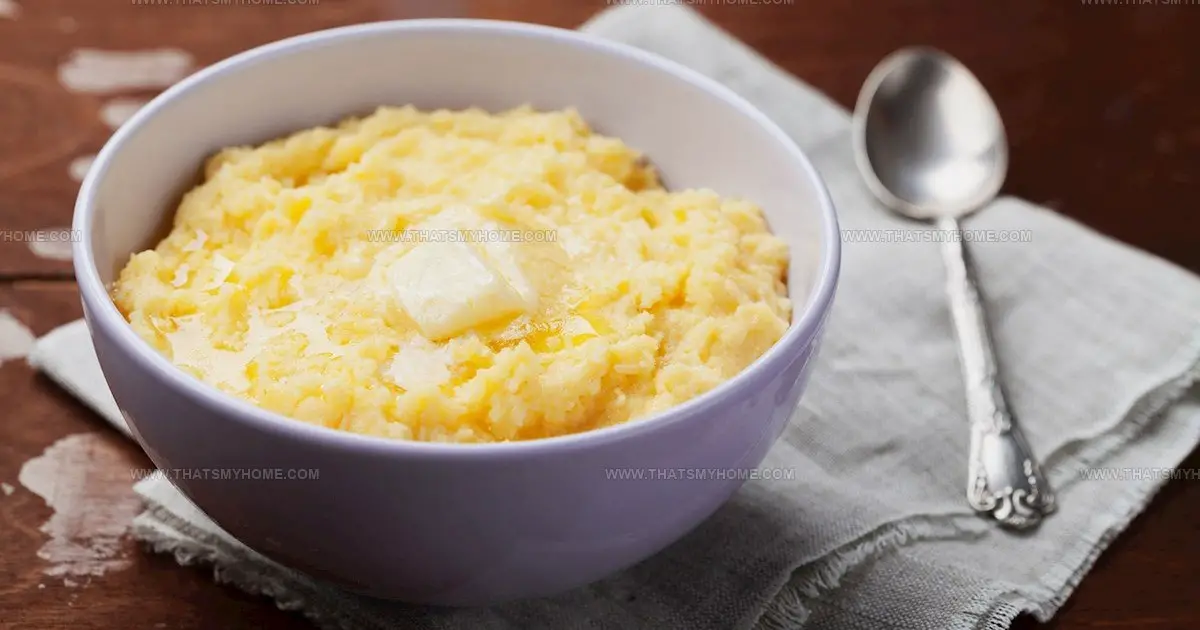
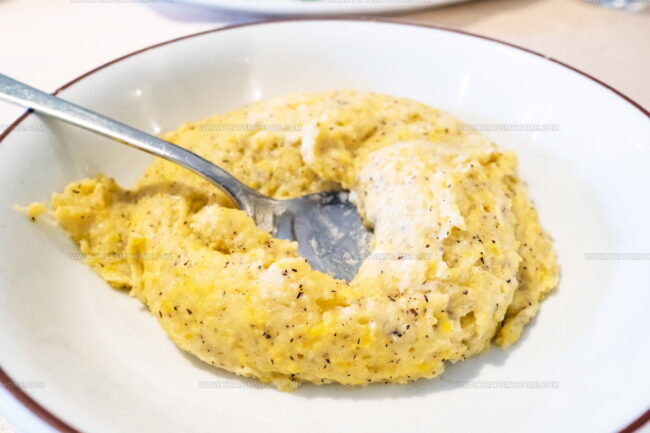
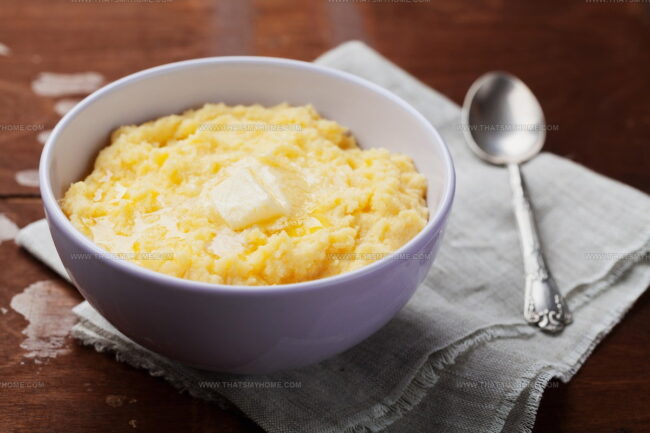
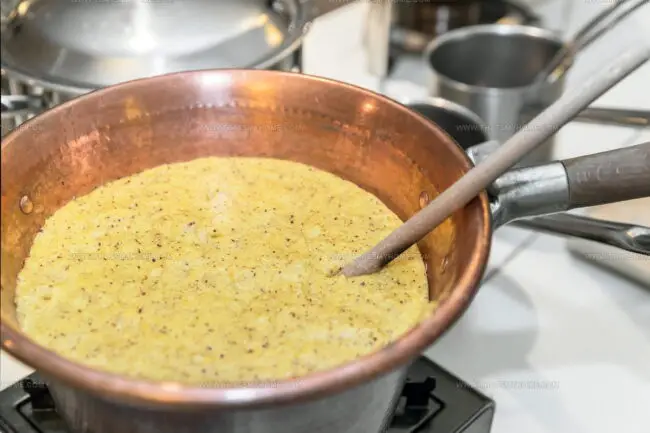
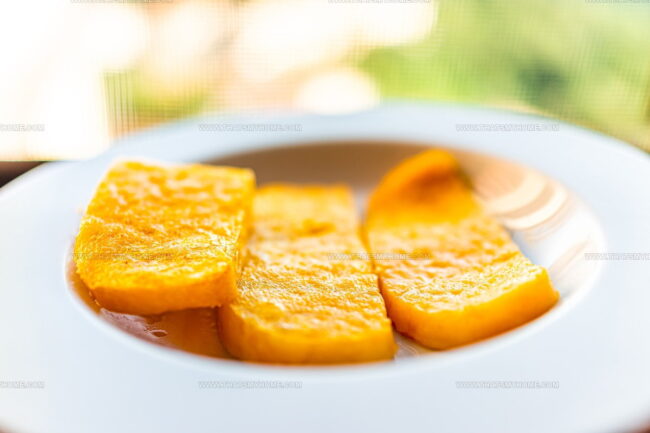
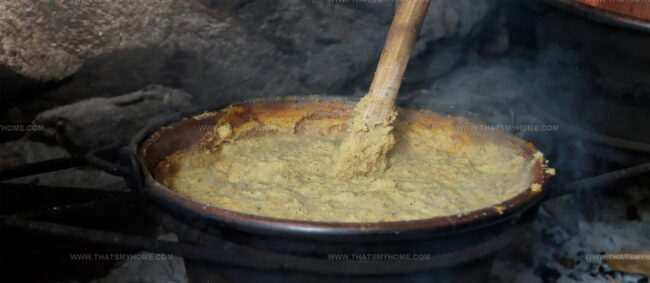
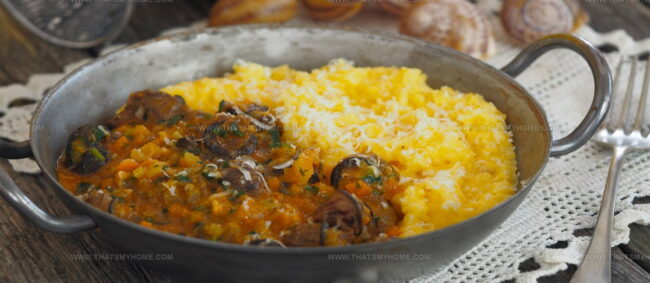
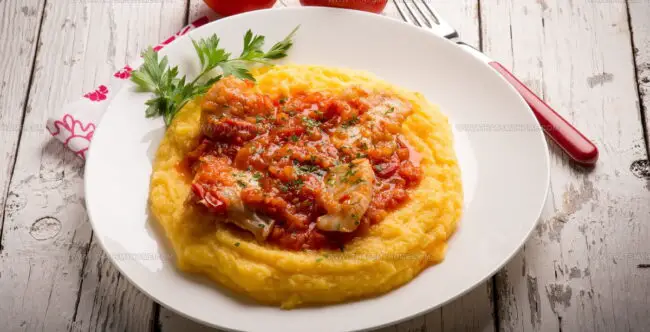
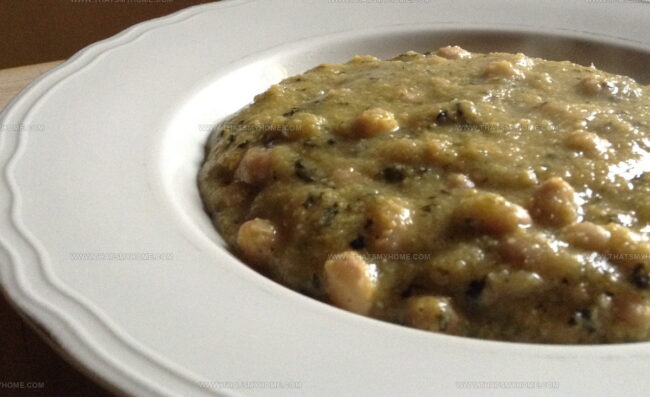
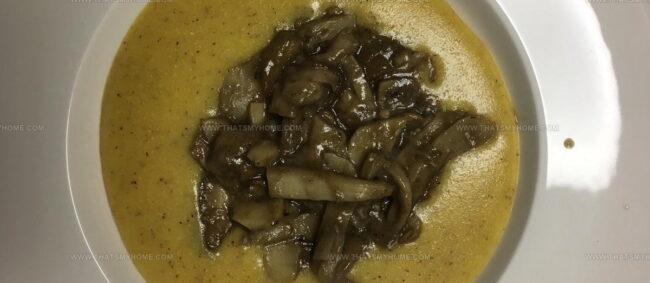
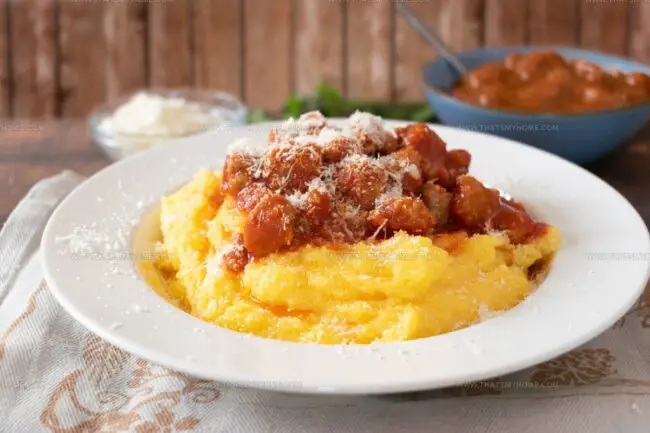
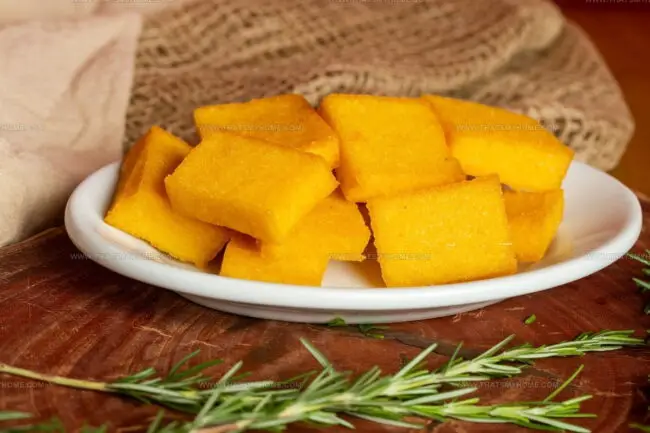
Mary Ellen
Founder, Pastry Chef & Recipe Developer
Expertise
Education
Savannah Technical College
Mary Ellen is the heart and soul of thatsmyhome.com. As the founder, pastry chef, and recipe developer, she refined her skills at Savannah Technical College with an Associate of Applied Science in Culinary Baking & Pastry Arts.
Mary blends classic techniques with modern twists to make artisanal breads, beautifully crafted pastries, and desserts full of unique flavor. Her passion is evident in every recipe, and she enjoys sharing her expertise through hands-on pastry workshops and insightful articles in local culinary magazines.